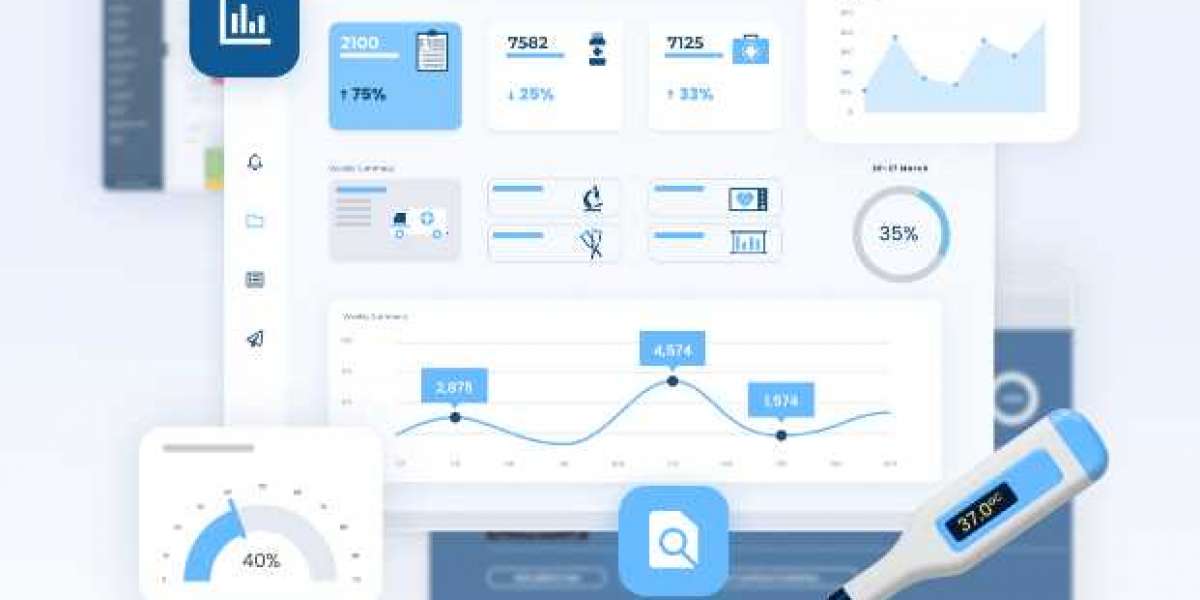The landscape of healthcare is evolving rapidly, driven by technological advancements and the increasing demand for efficient, accurate, and patient-centered care. Among these advancements, pharmacy software development has emerged as a critical element in transforming how pharmacies operate, enhancing patient safety, improving operational efficiency, and ensuring compliance with regulations. This article delves into the importance of pharmacy software development, its key components, benefits, challenges, and future trends, highlighting its profound impact on the pharmaceutical industry.
1. The Evolution of Pharmacy Software
1.1 Historical Context
Pharmacy software has its roots in the early days of computerized systems designed for inventory management and billing. Traditionally, pharmacists relied on manual processes, which were time-consuming and prone to errors. As the demand for accuracy and efficiency grew, the pharmaceutical industry began to adopt more sophisticated software solutions.
In the 1990s, pharmacy management systems started to gain popularity, offering features such as prescription processing, inventory control, and patient management. These early systems paved the way for modern pharmacy software, which incorporates advanced technologies like cloud computing, artificial intelligence, and data analytics.
1.2 Current Landscape
Today, pharmacy software encompasses a wide range of functionalities designed to streamline pharmacy operations. Modern systems are equipped with tools for:
- Prescription Management: Automating the entire prescription process, from order receipt to medication dispensing.
- Inventory Management: Tracking medication stock levels, expiration dates, and automating reorder processes.
- Patient Management: Maintaining comprehensive patient records, including medication history, allergies, and treatment plans.
- Billing and Insurance Processing: Facilitating insurance claims, managing patient billing, and ensuring compliance with payment regulations.
- Data Analytics and Reporting: Providing insights into pharmacy operations, medication usage, and patient outcomes to inform decision-making.
2. Importance of Pharmacy Software Development
Pharmacy software development is crucial for several reasons:
2.1 Enhancing Patient Safety
One of the primary goals of pharmacy software is to improve patient safety. Automated systems reduce the risk of human error in medication dispensing, ensuring that patients receive the correct dosages and medications. Features such as drug interaction checks and allergy alerts further enhance safety, reducing the risk of adverse events.
2.2 Streamlining Operations
Pharmacies often handle high volumes of prescriptions and patient interactions. Software solutions automate various processes, such as prescription refills and inventory tracking, allowing pharmacy staff to focus more on patient care rather than administrative tasks. This increased efficiency leads to faster service, improved patient satisfaction, and reduced operational costs.
2.3 Regulatory Compliance
Pharmacies must adhere to numerous regulations, including those imposed by the Drug Enforcement Administration (DEA) and the Food and Drug Administration (FDA). Pharmacy software helps maintain compliance by automating reporting processes and ensuring that all necessary documentation is accurate and up to date. This reduces the risk of audits and penalties while promoting best practices in medication management.
2.4 Improving Communication
Effective communication between healthcare providers, pharmacists, and patients is crucial for optimal patient care. Pharmacy software often includes features that enable better communication through secure messaging systems, patient portals, and integration with electronic health records (EHRs). This connectivity enhances collaboration and ensures that all parties involved in a patient's care have access to relevant information.
3. Key Components of Pharmacy Software
Pharmacy software typically consists of several key components, each designed to address specific aspects of pharmacy operations:
3.1 Prescription Management System (PMS)
A Prescription Management System is the core component of pharmacy software, automating the process of receiving, processing, and dispensing prescriptions. This system enables pharmacists to efficiently manage patient prescriptions, track medication history, and ensure compliance with regulations. Features may include:
- E-Prescribing: Allows healthcare providers to send prescriptions electronically, reducing errors associated with handwritten prescriptions.
- Medication Therapy Management: Enables pharmacists to review and manage patient medications, optimizing treatment plans.
3.2 Inventory Management System
An Inventory Management System is essential for tracking medication stock levels, expiration dates, and reorder processes. This system helps pharmacies maintain optimal inventory levels, reducing waste and ensuring that medications are available when needed. Key features include:
- Automated Reordering: Alerts pharmacists when stock levels reach predefined thresholds, prompting timely reordering.
- Expiration Tracking: Monitors medication expiration dates to prevent dispensing expired products.
3.3 Patient Management System
A Patient Management System focuses on maintaining comprehensive patient records, including medication history, allergies, and treatment plans. This system facilitates personalized care and improves patient outcomes. Features may include:
- Patient Profiles: Stores essential patient information, enabling pharmacists to provide tailored counseling and recommendations.
- Medication Reminders: Sends automated reminders to patients for medication refills and adherence.
3.4 Billing and Insurance Processing System
A Billing and Insurance Processing System streamlines the financial aspects of pharmacy operations, facilitating insurance claims, managing patient billing, and ensuring compliance with payment regulations. Key features include:
- Insurance Verification: Automates the process of verifying patient insurance coverage to minimize claim denials.
- Claims Management: Tracks and manages insurance claims, ensuring timely reimbursement.
3.5 Reporting and Analytics Tools
Reporting and analytics tools provide insights into pharmacy operations, medication usage, and patient outcomes. These tools enable pharmacies to make data-driven decisions and optimize their services. Features may include:
- Customizable Reports: Allows pharmacies to generate reports on various metrics, such as medication dispensing patterns and patient demographics.
- Performance Analytics: Tracks key performance indicators (KPIs) to assess operational efficiency and identify areas for improvement.
4. Benefits of Pharmacy Software Development
The development of pharmacy software brings numerous advantages to pharmacies and their patients. Some key benefits include:
4.1 Cost Reduction
By automating processes, pharmacies can reduce labor costs and minimize errors that lead to costly mistakes. Efficient inventory management prevents overstocking and waste, contributing to overall cost savings.
4.2 Increased Efficiency
With streamlined operations, pharmacy staff can handle more prescriptions in less time. This increased efficiency leads to shorter wait times for patients and allows pharmacists to spend more time on clinical activities, such as counseling patients about their medications.
4.3 Enhanced Patient Experience
Pharmacy software development contributes to a better patient experience by providing tools for medication adherence, such as reminders for refills and notifications for potential drug interactions. This proactive approach to patient care fosters trust and loyalty.
4.4 Better Data Management
Pharmacy software facilitates the collection and analysis of data related to patient demographics, medication usage, and inventory levels. This data-driven approach enables pharmacies to make informed decisions, optimize operations, and tailor services to meet the needs of their patient population.
4.5 Telepharmacy Capabilities
The rise of telehealth has led to an increased demand for telepharmacy services. Pharmacy software can support remote consultations and prescription deliveries, allowing pharmacists to reach patients who may have difficulty accessing traditional pharmacy services.
5. Challenges in Pharmacy Software Development
While the benefits of pharmacy software development are significant, several challenges must be addressed:
5.1 Integration with Existing Systems
Many pharmacies operate on legacy systems that may not easily integrate with new software solutions. Ensuring seamless interoperability between different systems can be a complex and time-consuming process, requiring significant investment in both time and resources.
5.2 User Training and Adoption
The successful implementation of pharmacy software relies on the willingness of staff to adopt new technologies. Comprehensive training programs must be developed to ensure that pharmacy personnel can effectively utilize the software, minimizing resistance to change.
5.3 Data Security Concerns
With the increasing reliance on digital systems comes the heightened risk of data breaches and cyberattacks. Pharmacy software developers must prioritize data security by implementing robust encryption, access controls, and regular security audits to protect sensitive patient information.
5.4 Regulatory Compliance
As regulations continue to evolve, pharmacy software must be designed to adapt to these changes. Staying compliant requires continuous updates and modifications to software systems, which can strain development resources.
5.5 High Development Costs
Developing custom pharmacy software can be expensive, especially for smaller pharmacies with limited budgets. It is essential for pharmacy owners to weigh the long-term benefits of investment against the initial costs.
6. Future Trends in Pharmacy Software Development
As technology continues to advance, the future of pharmacy software development looks promising. Several trends are shaping the landscape:
6.1 Artificial Intelligence and Machine Learning
AI and machine learning are expected to play a significant role in pharmacy software development. These technologies can enhance predictive analytics, improve medication adherence tracking, and optimize inventory management by analyzing historical data and predicting future trends.
6.2 Cloud-Based Solutions
Cloud-based pharmacy software is gaining popularity due to its scalability, accessibility, and cost-effectiveness. Pharmacies can leverage cloud solutions to store data securely, access applications remotely, and easily scale their operations without significant upfront investment.
6.3 Mobile Applications
The proliferation of smartphones has led to increased demand for mobile applications in healthcare. Pharmacy software developers are creating mobile-friendly solutions that allow patients to manage their prescriptions, communicate with pharmacists, and receive medication reminders directly on their devices.
6.4 Integration with EHRs
The integration of pharmacy software with electronic health records (EHRs) is becoming increasingly important. This connectivity allows for seamless sharing of patient information, improving care coordination and enhancing the overall patient experience.
6.5 Personalized Medicine
As the focus on personalized medicine grows, pharmacy software will need to adapt to support tailored medication regimens. Software solutions will increasingly incorporate genetic information and other patient-specific data to optimize treatment plans.
7. Conclusion
Pharmacy software development is a vital component of modern healthcare, offering numerous benefits that enhance patient safety, streamline operations, and ensure regulatory compliance. While challenges exist, the future of pharmacy software looks bright, with emerging technologies and trends poised to transform the pharmaceutical industry. By embracing these advancements, pharmacies can improve patient care, optimize their operations, and remain competitive in an evolving healthcare landscape. As the demand for innovative solutions continues to rise, pharmacy software development will play an essential role in shaping the future of the pharmaceutical industry.







